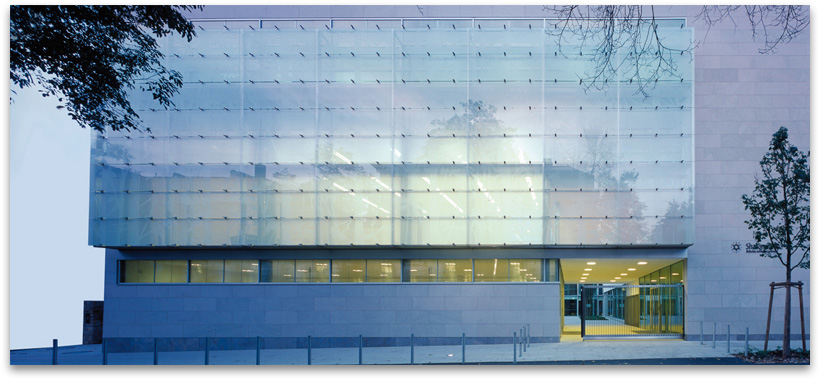The Jewish museum offers tours for all kind of schools. Students can experience Jewish life from a Jewish point of view.

Elementary Schools
The curriculum of 3rd graders focuses on Jewish religion. In the museum they will become familiar with the basics of Jewish holidays and be able to recognize what a Jewish synagogue looks like.
Children can explore all these details in the museum, Shalom Europa, and they can touch diverse religious items– in the real sense of the meaning. Today as well as around the time of Jesus, the Mesusa, Thallit and Tefillin are an eminent part of normal Jewish life. While the students are being toured, they can see and hold the objects in their hands. That also refers to Jewish items that have to do with Shabbat. They can even turn a Torah scroll.
The students can also visit the synagogue. Museum guides will explain the objects and their significance to the students, and if desired, the learning progress of the students can be intensified by worksheets.
We can offer a special guided tour also to special schools. Religious teenage groups are also welcome.
 “Hauptschulen”
“Hauptschulen”
We offer 5th to 9th graders at “Hauptschule” specially designed tours through the museum according to the curriculum.
These tours include Jewish basics (Torah, Talmud Torah with the concept of continuous disputes and arguments) and the life-long question how religious life can be lived in a special piety of prayer in an everyday Jewish life.
Jewish tradition is explained regarding Bar Mitvahs, weddings and traditional funeral rituals. Special focus is laid on Shabbat.
The deprivation of Jewish rights and the prosecution of Jews during the NS era is shown in the Shoa exhibition.
The synagogue is explained in detail. Students get the opportunity to ask questions.
Students who receive the sacrament of confirmation are also invited.
 “Realschulen”
“Realschulen”
Students of further education (6th graders) also focus on important issues connected with Jewish piety, celebrations and customs.
Tours for these students include the Jewish holy scriptures (written and oral Torah), symbols of Jews (the Mezuzah, Thallit and Tefillin, “From The Cradle To The Grave”, prayers, Shabbat and the annual Jewish holidays).
The basics of a Jewish synagogue service are explained in the synagogue.
For visitors who are interested in history, our museum, as well as the Jewish documentation center upstairs, offer excellent insights into Jewish life throughout the centuries.
secondary school students “Gymnasien”
According to Bavarian Curriculum we offer highly professional guided tours through our museum as well as through the synagogue.
We have special tours for :
History: 7th graders
We have a special tour on medieval Jewish history in Würzburg and we also provide the students with historic background information, specially related to the newly discovered Jewish tombstones (1140-1349), which was indeed a unique discovery.
The inscriptions tell the impressive inner life of the medieval Jewish Würzburg community and also the personal life story of some of its community members.
History – 9th graders
Students can find out more about the emancipation of Jews in the history of Würzburg and also their major impact on the economic and scholarly life. Many documents, testimonies, and resources are also available in the Documentation Center also located in the Jewish Center. The history of medieval pogroms until the time of Nazi terror is illustrated (deprivation of rights, deportation and murdering of Jews).
Religious education – 9th graders
– The basics of Jewish religion is visualized:
– Written and Oral Torah
– Emblems of Judaism and “From The Cradle To The Grave”
– Shabbat and Kashrut
– The Jewish calendar and Jewish festivals in the circle of the
years.
– The Orthodox Synagogue
Special topics can be arranged. We also offer tours for interested students without religious background.
For more information please call: +49931-4041441 (museum) or +49931-4041440 (main office)
Email: museum.shalomeuropa@gmx.de
Informationen – download
Grundschule Hauptschule Realschule Gymnasium location and further information


 Deutsch
Deutsch English
English Русский
Русский Español
Español Italiano
Italiano